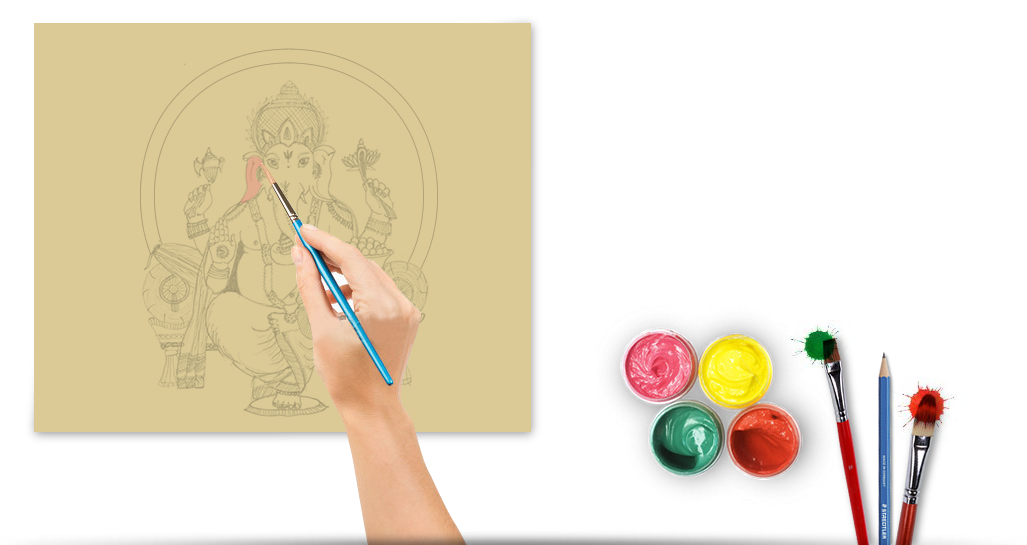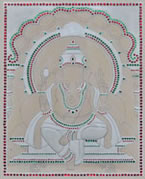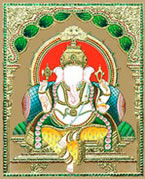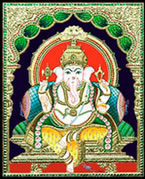Learn Tanjore Painting

LEARN TANJORE PAINTINGS
School of paintings originated in Thanjavur during the reign of the Marathas in the 16th century. It existed from 17th to 19th century, and had a limited output.
MAKING OF TANJORE PAINTINGS
1.BOARD PREPARATION

The first step towards making of Tanjore painting starts from Board Preparation, where we prepare the surface for the painting. On a Waterproof wooden board, white cloth is pasted and patti coating work is done with mixture of lime stone powder and other materials for a smoother surface after which polishing is done for a smoother Finish.
2.TRACING WORK

Fundamental Art work starts here where we draw the outline of the Subject we intend to do, From here concentration and dedication is needed to get magnificent Painting outlook. The outline of the painting is drawn after which stone work marking is done.
3.STONE FIXING

In this step we do the fixing of the Semi-Preciou Stones in the Boards, where it looks like ornaments and adds beauty to the paintings. It makes the painting Elite. Care to be taken in this step.
4.BASE MUKK WORK:

Mukk work is done to bring in embossing effect in the painting. Base mukk work is done with mixture of Tanjore painting lime stone powder and Arabic Gum.
5.BRUSH DESIGN WORK

In this step we create fine design above the Base Mukk work, where curtain design, ornaments, others are drawn with thick mukk compound and after which it will be left to dry completely.
6.FIXING OF GOLD FOIL

In this step we paste the 24ct Pure gold foils over the Mukk work and Brush design work. The gold foil is cut into suitable shape and size to suit the painting design and will be pasted using Gum Arabic.
(No other additives will be used because that could damage the Gold Foil)
7.BODY COLOURING

Here we start the colouring work, where we do the body colouring with the colour suitable for the subject. The purpose of doing this is to create the base before we do the Washing work.
8.LINING WORK

In this step we draw the line design over the Gold foil to get a good effect on the painting, which make the embossing work more effective.
9.WASHING WORK

After Body colouring, we start with washing work. We create the effects in the colouring where the washing is done to match the lighting effect on the subject of the painting.
10.CURTAINS AND GARLAND (MALA) WORK

Here we do the Curtain colouring work, then we match the curtains colour with the Garland colour, so the painting looks really beautiful. Most care is taken to make the curtains and garland look really beautiful.
11.FINAL LINING WORK

After finishing the curtain and mala work, Lining work is done even over the curtain, mala, and other places wherever necessary.
12.FACE AND FINAL WORK

After finishing all other work, finally face feature work is done, where most care has to be shown because it creates the final image for the whole process. After face work, Then final touching work is done like matching the touch of colour in the painting. Then Framing of the painting is done.
